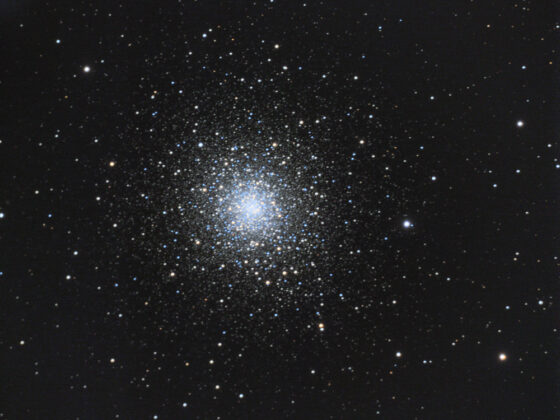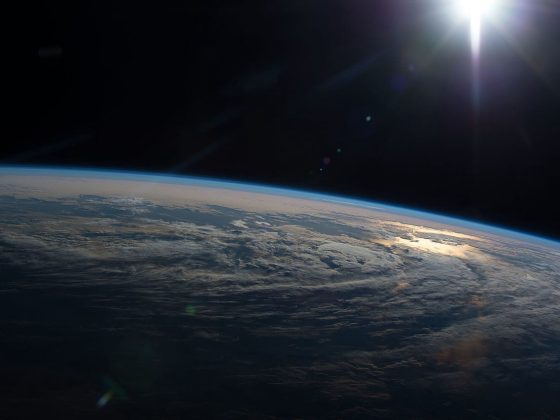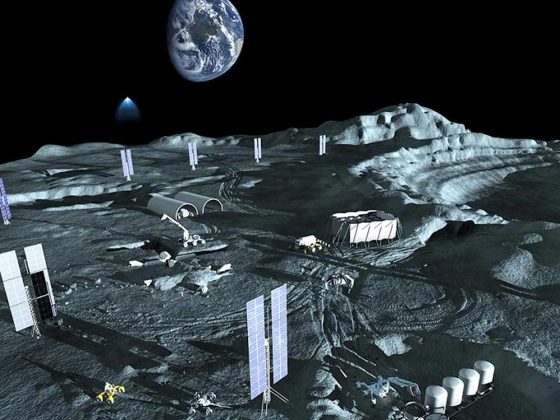
Thousands of galaxies flood this near-infrared image of galaxy cluster SMACS 0723. High-resolution imaging from NASA’s James Webb Space Telescope combined with a natural effect known as gravitational lensing made this finely detailed image possible.
Image Credit: NASA and STScI
Professor Avi Loeb, head of the Galileo Project and founding Director of Harvard University’s – Black Hole Project writes about the first pictures from NASA’s revolutionary James Webb Telescope. This article is published earlier in Medium.
From its vantage point L2, located a million miles away from Earth, the Webb Telescope just started to unravel new insights about the Universe. What is most exciting about the latest data caught in the “spider web” of the 18 hexagonal segments of its primary mirror?
The new Webb data shows evidence for water vapor, hazes and some previously unseen clouds, on the gas-giant planet WASP-96b. The planet’s mass is half of Jupiter’s mass and it transits in front of its star every 3.4 days, allowing a small fraction of the star’s light to pass through its atmosphere and reveal its composition to Webb’s instruments. This planet is not expected to host life-as-we-know-it because it does not possess a thin atmosphere on top of a rocky surface, like the conditions on Earth.
The image shows numerous red arcs stretched around a cluster of galaxies, named SMACS 0723, located about 5 billion light years away. NASA-administrator Nelson noted: “Mr President, we’re looking back more than 13 billion years”, an unusual statement to be heard in the household of DC politics which makes plans on a timescale of four years.
But there was also a “deep image” of the cosmos that was released in a dedicated White House event, hosted by President Biden and vice-President Harris. The image shows numerous red arcs stretched around a cluster of galaxies, named SMACS 0723, located about 5 billion light years away. NASA-administrator Nelson noted: “Mr President, we’re looking back more than 13 billion years”, an unusual statement to be heard in the household of DC politics which makes plans on a timescale of four years.
These amazingly sharp arcs were observed thanks to the unprecedented angular resolution of Webb’s optics. They feature ancient small galaxies from early cosmic times which happened to lie behind the cluster so that their images were deformed by the effect of gravitational lensing. Clusters of galaxies, like SMACS 0723, contain a concentration of about a thousand Milky-Way-like galaxies, buzzing around at five per cent the speed of light or a thousand miles per second. Most of the cluster mass is made of dark matter, an invisible substance which fills the dark gaps in Webb’s image. The luminous cores of galaxies are like fish swimming in a container filled with transparent water, bound together by gravity — which serves as the “aquarium” walls.
Ever since Fritz Zwicky observed clusters of galaxies in 1933, we know that most of the matter in them is invisible. While Zwicky inferred that dark matter must exist in order to bind the fast-moving galaxies, the same gravitational potential well can be probed directly through its lensing effect on background galaxies.
The Webb Telescope achieves unprecedented sensitivity to the faint galaxies that produced the first light during the dark ages of the Universe, hundreds of millions of years after the Big Bang. Its unprecedented ability to peer back in time stems from its observing site far away from the glowing terrestrial atmosphere, the area of its “light bucket” being 7.3 times larger than that of the Hubble Space Telescope, and its high sensitivity to the infrared band into which starlight from early cosmic times is redshifted.
In its released “deep image”, the 10 billion dollars Webb Telescope, is aided by the natural gravitational lens of SMACS 0723, graciously provided to us for free. The cluster lens magnifies distant sources behind it by bending their light. The combination of the Webb telescope and the cluster’s magnifying power allows us to peer deeper into the universe than ever before.
In a paper from 1936 titled “Lens-Like Action of a Star by the Deviation of Light in the Gravitational Field”, Albert Einstein predicted that a background star could be gravitationally lensed into a ring if it is located precisely behind a foreground star. This “Einstein ring” is an outcome of the cylindrical symmetry around the lens. A cluster of galaxies is not perfectly symmetric and so sources behind its center are lensed into a partial ring, or an arc — as evident from Webb’s image.
In 1992, I entered the neighboring office of Andy Gould, a postdoctoral fellow at the Institute for Advanced Study at Princeton, where Einstein wrote his lensing paper. Andy worked extensively on gravitational lensing by compact objects, considering the possibility that the dark matter is made of them. I asked Andy whether he ever considered the contribution of a planet to the lensing effect by a star. Andy responded promptly: “planets have a negligible mass relative to their host star and so their impact on the combined lensing effect would be negligible.” I accepted the verdict of the local lensing expert and retreated quietly to my office. Ten minutes later, Andy showed up in my office and said: “I was wrong … the Einstein ring radius of planets scales as the square root of their mass and so their effect is measurable and could serve as a new method for discovering planets around distant stars. Let’s write a paper about that.” And so we did in a paper titled: “Discovering Planetary Systems Through Gravitational Microlenses.” Today, gravitational lensing is the main method by which planets are discovered around distant stars where the transit method is less practical because the stars are too faint.
This anecdote from thirty years ago weaves together the themes of the two Webb images that were just unraveled.
A decade ago, I wrote two textbooks, one titled: “How Did the First Stars and Galaxies Form?”, and the second co-authored with my former graduate student, Steve Furlanetto, titled “The First Galaxies in the Universe”. Both books described theoretical expectations for what the Webb telescope might find in the context of the scientific story of Genesis: “Let there be light”. Last year, I co-authored a textbook with my former postdoc, Manasvi Lingam, titled: “Life in the Cosmos”. There is no doubt that I would be glad if the forecasts in these textbooks will be confirmed by future Webb data. But even better, I would be thrilled if Webb’s data will surprise us with new discoveries that were never anticipated.
Feature Image Credit: NASA
This landscape of “mountains” and “valleys” speckled with glittering stars is actually the edge of a nearby, young, star-forming region called NGC 3324 in the Carina Nebula. Captured in infrared light by NASA’s new James Webb Space Telescope, this image reveals for the first time previously invisible areas of star birth.
Called the Cosmic Cliffs, Webb’s seemingly three-dimensional picture looks like craggy mountains on a moonlit evening. In reality, it is the edge of the giant, gaseous cavity within NGC 3324, and the tallest “peaks” in this image are about 7 light-years high. The cavernous area has been carved from the nebula by the intense ultraviolet radiation and stellar winds from extremely massive, hot, young stars located in the center of the bubble, above the area shown in this image.






